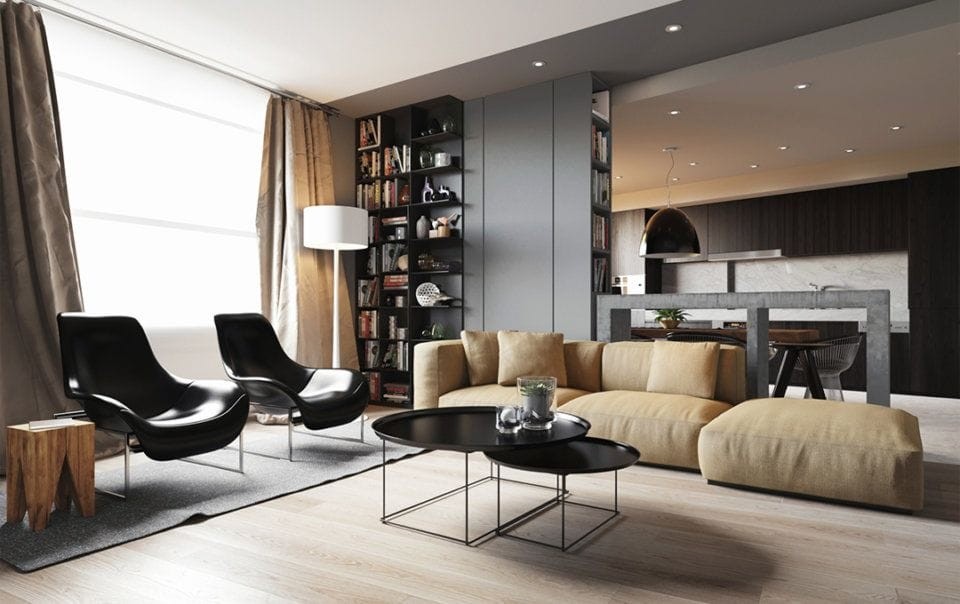
Walk into any thoughtfully designed home in Mangalore lately and you’ll notice something different. The coastal city’s interior landscape is shifting, moving away from the heavy furniture and dark wood that dominated living rooms for decades. What’s replacing it feels both global and surprisingly local, a balance that’s harder to strike than it sounds.
Black Pebble Designs has been at the forefront of this transformation, introducing approaches that respect Mangalore’s climate, culture, and the way families actually live here. These aren’t trends lifted wholesale from Pinterest boards in Mumbai or Bangalore. They’re adapted, tested in real homes with real monsoons, and refined for spaces where three generations might gather for Sunday lunch.
1. Coastal Minimalism with Konkani Soul
Minimalism has been having its moment globally for years now, but the sterile, all-white aesthetic never quite worked in Mangalore. Our humidity laughs at pristine white upholstery. Our love for hospitality demands more warmth than stark concrete walls can provide.
The version taking root here keeps the clean lines and uncluttered surfaces but adds back texture and color in deliberate ways. Think whitewashed walls paired with traditional Mangalorean roof tiles repurposed as decorative elements. Rattan furniture that breathes in our climate instead of leather that sticks to your legs by March. Open shelving displaying brass urlis and ceramic pieces from local artisans rather than tchotchkes that gather dust.
One project I saw recently used polished oxide flooring throughout, a material that stays cool underfoot even during power cuts. The furniture count was minimal, maybe half what the previous owners had crammed into the same space, but every piece served multiple purposes. A low wooden platform did duty as both seating and a display for the family’s collection of Yakshagana masks. The room felt spacious without feeling empty, breathable without being cold.
This approach works particularly well in Mangalore’s smaller apartments, where every square foot counts. When you’re working with 850 or 1,000 square feet, you can’t afford visual clutter. But you also can’t strip away so much that the space feels transient, like a hotel room rather than a home.
2. Biophilic Design That Goes Beyond Potted Plants
Everyone’s talking about bringing nature indoors, but most interpretations stop at lining windowsills with succulents and calling it a day. What’s emerging in Mangalore homes goes deeper, literally building natural elements into the architecture and flow of the space.
Large windows aren’t new here, we’ve always understood the value of cross-ventilation. But now those windows are being positioned to frame specific views: a rain tree in the compound, the play of light through a mango grove, even a carefully curated balcony garden. The window becomes a living artwork that changes with seasons.
Indoor gardens are moving beyond decorative status. I’ve seen kitchens with built-in herb planters that get used daily, not just admired. Vertical gardens on previously wasted wall space, using native ferns and money plants that actually thrive in our humidity rather than exotic species that need constant fussing.
Water features are being incorporated thoughtfully too. Not the aggressive fountains that dominated 1990s lobbies, but subtle elements. A small channel of water running along the edge of a courtyard, echoing the traditionalkulam design. The sound matters as much as the visual, creating a sensory layer that helps mask traffic noise in urban areas.
The material palette supports this too. Bamboo is appearing in unexpected applications beyond furniture, as ceiling treatments and partition screens. Stone with its natural variations and textures instead of uniform ceramic. Wood left closer to its natural finish rather than stained into oblivion.
3. Multi-Functional Spaces for Multi-Generational Living
Here’s something designers in other cities often miss: Mangalore homes aren’t designed for nuclear families living in isolation. Grandparents visit and stay for weeks. Adult children return for festivals. Cousins drop by unannounced and stay for dinner.
The rigid room designations that work elsewhere create friction here. A formal living room that sits empty except for Diwali? That’s 200 square feet of wasted potential in a city where space comes at a premium.
The shift is toward flexible zones that adapt to different needs throughout the day and year. A study area with a Murphy bed that converts into a guest room. Dining spaces that flow into the living area, allowing you to push furniture aside when 15 people show up for a birthday. Kitchen islands with seating that serve as homework spots during the day and cocktail stations when friends visit.
Storage design particularly reflects this understanding. Custom cabinetry that goes floor to ceiling, hiding away the extra mattresses and festival decorations and bulk rice purchases that are part of life here. But also display niches for rotating seasonal items, so homes don’t feel like permanent museums to a single aesthetic.
The leading interior designers in Mangalore, Black Pebble Designs especially, have gotten good at reading how families actually use their spaces versus how they think they’ll use them. That reading informs everything from furniture scale to lighting placement. A sofa might be beautiful, but if it’s too deep for older relatives to rise from comfortably, it’s not the right piece.
4. Smart Integration Without the Showiness
Technology is finding its way into Mangalore homes, but the approach is quieter than the flashy smart home demonstrations you see in metros. People here are pragmatic. They want solutions to real problems, not gadgets for the sake of gadgets.
Voice-controlled lighting makes sense when you’re coming home with grocery bags in both hands. Automated curtains earn their keep during monsoon season when you’re at work and suddenly it’s pouring. Smart ceiling fans that adjust speed based on temperature and humidity? Actually useful in a climate this variable.
But the implementation hides the technology rather than showcasing it. Speakers built into ceiling panels. Touch panels that look like traditional switch plates. Climate control that happens quietly in the background rather than through conspicuous thermostats.
The biggest win is lighting design that finally moves beyond the single harsh overhead tube light that’s been standard for too long. Layered lighting with ambient, task, and accent elements, all controllable through apps but also via normal switches for family members who aren’t phone-dependent. Warm color temperatures that actually make food look appetizing and faces look human, not the cool white glare that makes everyone look slightly ill.
Security integration is the other area seeing real adoption. Video doorbells make sense when you have daily deliveries and vendors. But again, the approach is subtle. Cameras that don’t look like surveillance equipment. Access control that doesn’t require explaining technology to every visitor.
5. Artisanal Materials Meeting Contemporary Forms
There’s been a significant pushback against the uniformity of mass-produced everything. People are tired of walking into homes that could be anywhere, homes where every fitting came from the same three national retail chains.
What’s filling that void is a renewed interest in local craft, but applied in contemporary ways. Tile work from Mangalorean craftsmen, but in patterns that feel current rather than fussy. Wooden furniture from local carpenters who understand our wood species and climate, designed with clean modern lines rather than heavy carved details.
Textiles particularly benefit from this approach. Handwoven cotton from nearby weavers for curtains that filter light beautifully and wash easily. Block-printed cushion covers that add color without the visual weight of dense patterns. Area rugs from traditional makers but in geometric designs that work with modern furniture.
The economic logic makes sense too. These pieces often cost about the same as mass-market alternatives, sometimes less, while supporting local livelihoods and getting you something unique. When a visitor compliments that shelf or textile, you have a story to share rather than a store name.
Lighting fixtures are seeing this treatment as well. Pendant lights using traditional brass work but in contemporary shapes. Floor lamps combining metal and bamboo in ways that feel fresh. These pieces become focal points in otherwise minimal spaces, earning their visual presence through craft quality.
Making It Work
These trends aren’t meant to be adopted wholesale. The homes that feel most successful pick elements that align with how the family actually lives. A couple without kids might go hard on the minimalism. A joint family might prioritize the flexible spaces and storage solutions. A household of plant enthusiasts will lean into biophilic elements.
The common thread is intentionality. Every choice serves a purpose beyond looking good in photographs. Materials suit the climate. Layouts accommodate real routines. Technology solves actual problems. Craft elements have personal meaning.
Mangalore’s interior design scene is maturing past the era of blindly following whatever’s trending in metros or abroad. What’s emerging is a design language that’s specific to this place, these people, this way of living. It acknowledges that our needs differ from a Delhi family’s or a Mumbai couple’s. It respects that our climate, culture, and family structures require different solutions.
The homes reflecting these trends feel both contemporary and rooted, global in awareness but local in application. They work with Mangalore’s strengths rather than fighting them. And crucially, they feel like homes rather than showrooms, spaces designed for living rather than just looking at.


